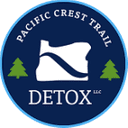
Cocaine, amphetamines, methamphetamine, and more. This is what we are primarily dealing with when it comes to stimulant withdrawal and detox. Furthermore, several prescription drugs diagnosed to treat ADHD classify as stimulants, as well as a controlled substance. The abuse of this substance often leads to hostility, paranoia and psychotic episodes, as well as putting the user at risk of permanent brain damage.
Stimulants are the most widely used psychoactive drug in the world, taking on many forms as stated previously. Their prevalence in the United States, primarily in the form of Methamphetamine on the west coast, has proven to be a serious blight on the fabric of society, much like all drugs. Stimulant user’s proneness to violence and severe irrationality is what makes it a danger.
Understanding Stimulant Withdrawal and Detox
To understand what the drug is doing, and consequently what it is like to withdraw from it, we first have to understand the concept of “borrowed energy.” (Cohen/Inaba) Use of stimulants, such as meth, causes an increase in the two neurotransmitters Epinephrine (effects physical energy) and Norepinephrine (effect on motivation and confidence). While most of these energy chemicals are released naturally in the body during a 24-hour span, the use of stimulants heightens these neurotransmitters, releasing extra amounts of extra energy before the actually needs it; thus, borrowed energy. This is why we see side effects such as hypervigilance and accelerated speech in stimulant users.
With this heightened effect and output of energy comes the eventual crash. An excessive amount of stimulant use causes the bodies energy sources to become depleted over time and left without any source of reserves. The result is the strongest effect of stimulant withdrawals, which is categorized by major depression, which can last anywhere from a few days, weeks, or occasionally months. (Cohen/Inaba)
Like with most substances, the detoxification from stimulants is safest in a detox center. For example, the most glaring side effect of stimulant withdrawal is depression. The detox often consists of the use of anti-depressant medications, monitored by a medical staff. Non-narcotic medications for treating insomnia and anxiety may be available, depending on symptoms. While the patient can exhibit some physical irritability, such as stomach ache and possible nausea, the side effects of stimulant withdrawal are primarily going to be psychological rather than physical.
Begin Your Journey at PCT Detox
Pacific Crest Trail Detox is more than equipped to comfortably walk an individual through their stimulant withdrawals. The primary course of action would be to address our client’s symptoms through detox programs. The next step is to get some rest. Their appetite may not return immediately, but for the body to start stabilizing, they are going to need some rest.
Like any other stimulant withdrawal and detox, this is the first step on the road to recovery. A variety of resources are provided to our clients for a continuum of care, including addiction treatment. After detox, they should immediately transition into residential treatment. These facility recommendations will be available to the client, for them to use how they feel necessary. We will always do our very best to assure our clients do not have to walk this journey alone.
-J. Dalton Williams
